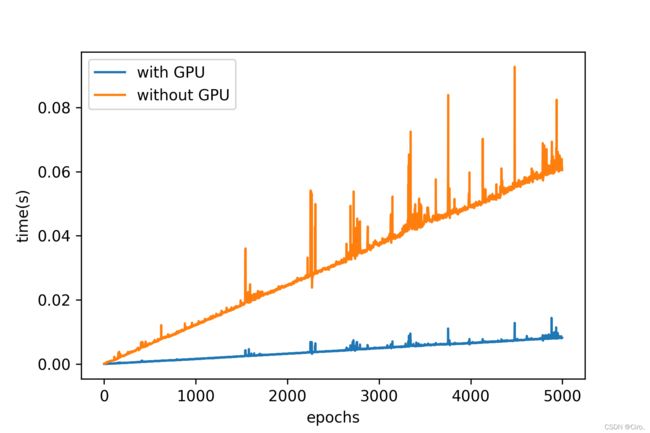Python GPU编程实例(最简单, 入门版)
1. 首先需要安装numba(python的CUDA版)
conda install numba & conda install cudatoolkit
2. 导入numba
from numba import jit, cuda3. 以我的一个机器学习学习作业为例, 比较GPU与不带GPU的运行速度差异, 只需要在定义的函数前面加上 @jit 即可,
#%%deine functions
from numba import jit, cuda
from timeit import default_timer as timer
def computeCost(X, y, theta):
### X = (47, 3), theta = (3, 1)
### START CODE HERE ###
m = X.shape[0]
diff = np.dot(X,theta) - y;
cost = np.power(diff, 2).sum()/2/m
return cost
@jit
def computeCost_gpu(X, y, theta):
### X = (47, 3), theta = (3, 1)
### START CODE HERE ###
m = X.shape[0]
diff = np.dot(X,theta) - y;
cost = np.power(diff, 2).sum()/2/m
return cost
def gradient(X, y, theta):
### START CODE HERE ###
m = X.shape[0]
j = np.dot(X.T, (np.dot(X,theta) - y))
return j
### END CODE HERE ###
@jit
def gradient_gpu(X, y, theta):
### START CODE HERE ###
m = X.shape[0]
j = np.dot(X.T, (np.dot(X,theta) - y))
return j
### END CODE HERE ###
def batch_gradient_descent(X, y, theta, epoch = 10, lr=0.02):
### START CODE HERE ###
for k in range(epoch):
cost = computeCost(X, y, theta)
j = gradient(X, y, theta)
theta = theta - lr*j
cost = computeCost(X, y, theta)
return theta, cost
@jit
def batch_gradient_descent_gpu(X, y, theta, epoch = 10, lr=0.02):
### START CODE HERE ###
for k in range(epoch):
cost = computeCost_gpu(X, y, theta)
j = gradient_gpu(X, y, theta)
theta = theta - lr*j
cost = computeCost_gpu(X, y, theta)
return theta, cost
#%%test gpu speed
def gpu_speed(epoch):
lr = 0.02;
theta = np.zeros((3,1))
start = timer()
theta_pred, final_cost = batch_gradient_descent(X, y, theta, epoch, lr=lr)
#print("without GPU:", timer()-start)
without_gpu = timer()-start;
start = timer()
theta_pred, final_cost = batch_gradient_descent_gpu(X, y, theta, epoch, lr=lr)
#print("with GPU:", timer()-start)
with_gpu = timer()-start;
return with_gpu, without_gpu
epochs = np.arange(1, 5000)
with_gpu_time = np.zeros((epochs.shape[0]))
without_gpu_time = np.zeros((epochs.shape[0]))
for kk, epoch in enumerate(epochs):
with_gpu_time[kk], without_gpu_time[kk] = gpu_speed(epoch)
#%%gpu difference plot
plt.plot(with_gpu_time[0:kk], label = 'with GPU')
plt.plot(without_gpu_time[0:kk], label = 'without GPU')
plt.xlabel('epochs')
plt.ylabel('time(s)')
plt.legend()
plt.savefig('gpu_difference', dpi = 300)